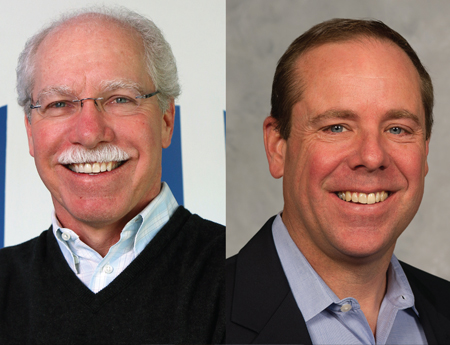Scripting Broadcasting’s Future

The savviest local broadcasters of 2014 are focused on 2015—and beyond. They’ve increased scale to get vital leverage with multichannel video programming distributors and networks. They’ve sunk retrans cash into resources—reporters, helicopters, technology—to make their reporting stand out. They’re also investing it in research and development, creating shows outside of traditional newscasts in an effort to break away from highcost, low-return syndicated programming.
If that’s the strategy for a successful future in broadcasting, it may as well have been scripted by E.W. Scripps. On a freezing New York day last February, the chief executives of Scripps and Journal Communications broke bread and talked of a blockbuster deal. Five months later, they announced it: Journal’s stations coming over to Scripps, and Scripps’ newspapers shifting to Journal. Duopolies are particularly hard to come by these days, but the deal—expected to close in 2015—gives Scripps valuable regional synergies.
It also puts radio stations in the Scripps basket, along with growth markets including Las Vegas and Nashville. “These are high-quality markets,” says Rich Boehne, Scripps president and CEO. “We spend as much time on market analysis as we do on station analysis.”
That pact came on the heels of Scripps acquiring stations in challenging markets Detroit and Buffalo, which offers a peek at what might go down after the merger closes. Hours after Scripps closed on WMYD Detroit, it debuted a 10 p.m. newscast. Following that was two fresh hours of a.m. news, a new logo and dozens of added staffers on both sides of the camera. For its part, WKBW Buffalo did exhaustive research, which resulted in a new focus on mornings, and the goal of owning weather with key hires and technology. When six feet of snow buried Buffalo last month, the new WKBW was well-poised to tackle the story.
“We take a lot of pride in the fact that we know how to make TV stations better,” says Brian Lawlor, Scripps senior VP of television.
Some groups get larger for the sake of getting larger; Boehne describes Scripps’ acquisitions as “surgical.” The new stations also give Scripps a broader platform for homegrown shows. It has four in daily distribution: RightThisMinute, a partnership with two other groups; Let’s Ask America and The List in prime access; and the newsy, local-national hybrid The Now at 4 p.m.
Broadcasting & Cable Newsletter
The smarter way to stay on top of broadcasting and cable industry. Sign up below
Scripps continues to test concepts to find the next group-wide show. “We’re willing to take creative risks to advance a television station,” says Lawlor.
Perhaps no group has taken bigger swings on the digital side. WCPO, in Scripps’ Cincinnati home market, debuted a premium content model on its website, offering subscriptions for deeper content and deals around the market. With 30-plus reporters creating digital-only content, it’s the only station site of its kind. Lawlor won’t share subscriber numbers, but says the “Insider” model is working. “We continue to grow our subscriber base and engage folks,” says Lawlor, “and prove every day why it’s worth paying for.”
Eight Scripps markets have introduced a Monday-morning, mobile-only program centered on the local NFL team. It’s a place for fans to share ecstasy and agony—and a way for a station to reach beyond its geographic boundaries.
All the while, the Scripps stations’ standout local investigative programming has thrived. WCPO and KJRH Tulsa picked up National Murrow honors, and WFTS Tampa earned a prestigious duPont-Columbia award.
Scripps has set itself up to be a pure-play broadcaster in 2015, a significant shift for a company with a 130-year history in the newspaper business. “It’s a real statement that we plan to be in the local news and information business for the next 130 years,” says Lawlor. “We feel very strongly about broadcast as a medium.”
Michael Malone is content director at B+C and Multichannel News. He joined B+C in 2005 and has covered network programming, including entertainment, news and sports on broadcast, cable and streaming; and local broadcast television, including writing the "Local News Close-Up" market profiles. He also hosted the podcasts "Busted Pilot" and "Series Business." His journalism has also appeared in The New York Times, The L.A. Times, The Boston Globe and New York magazine.

